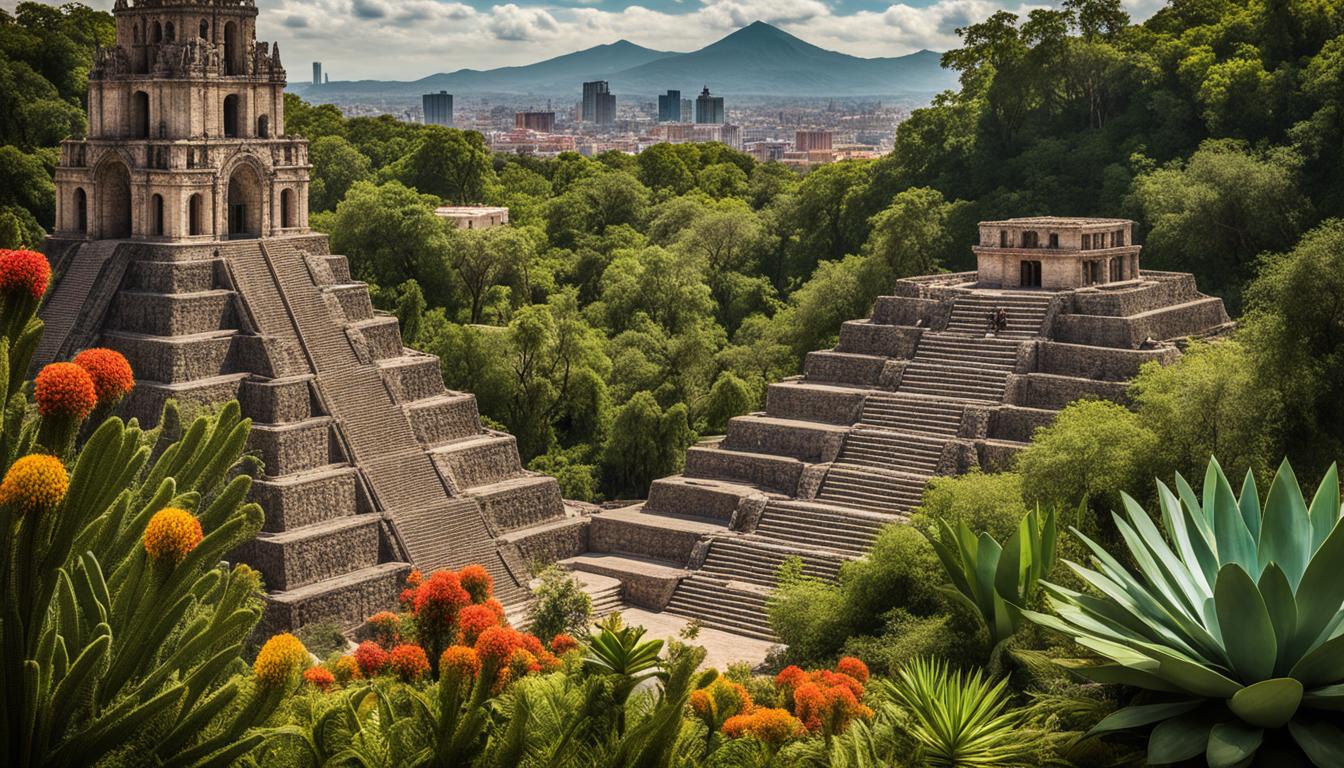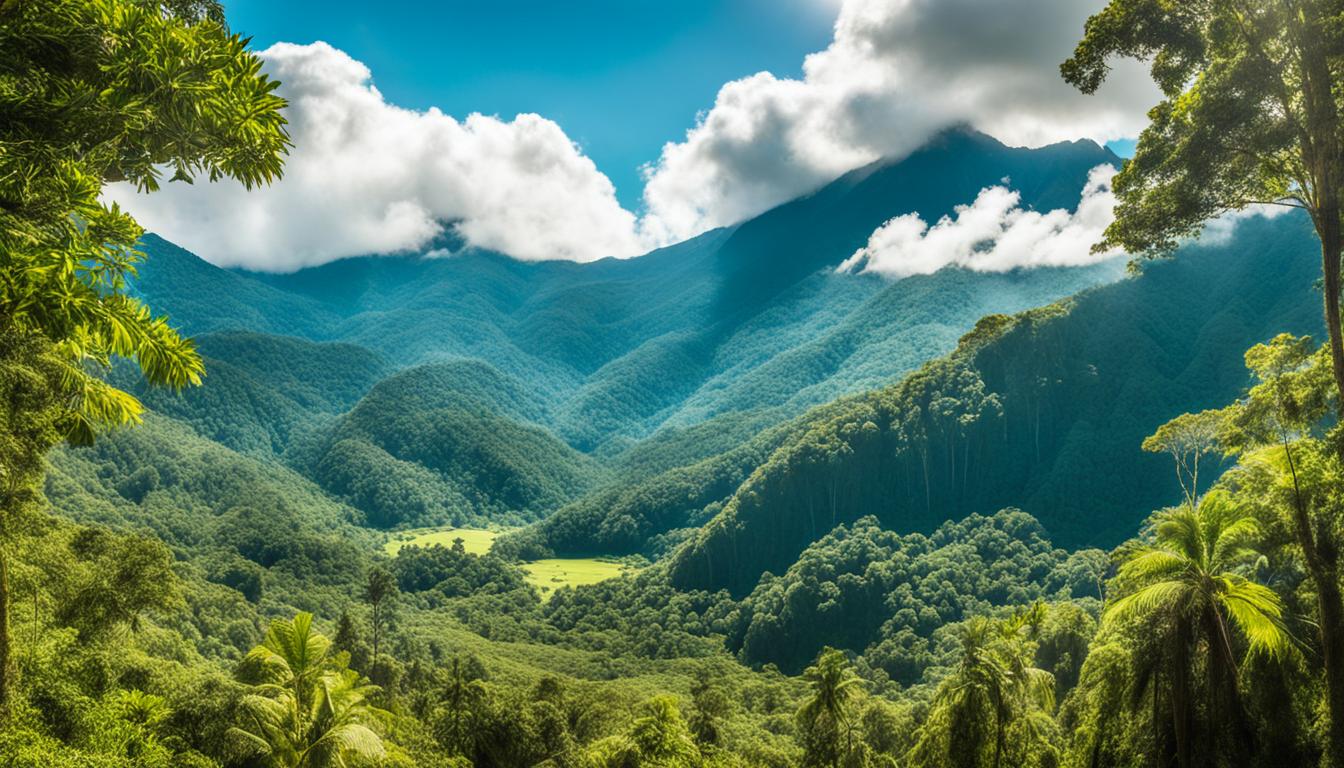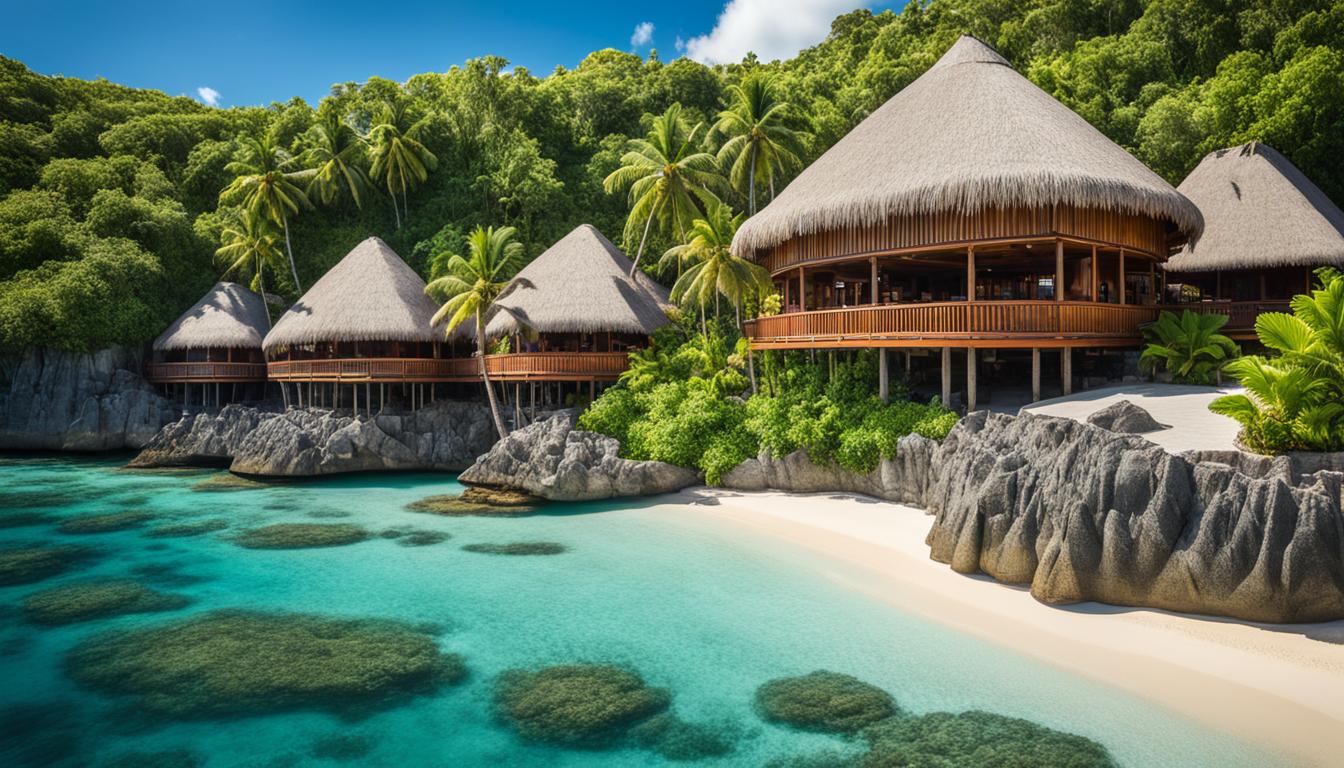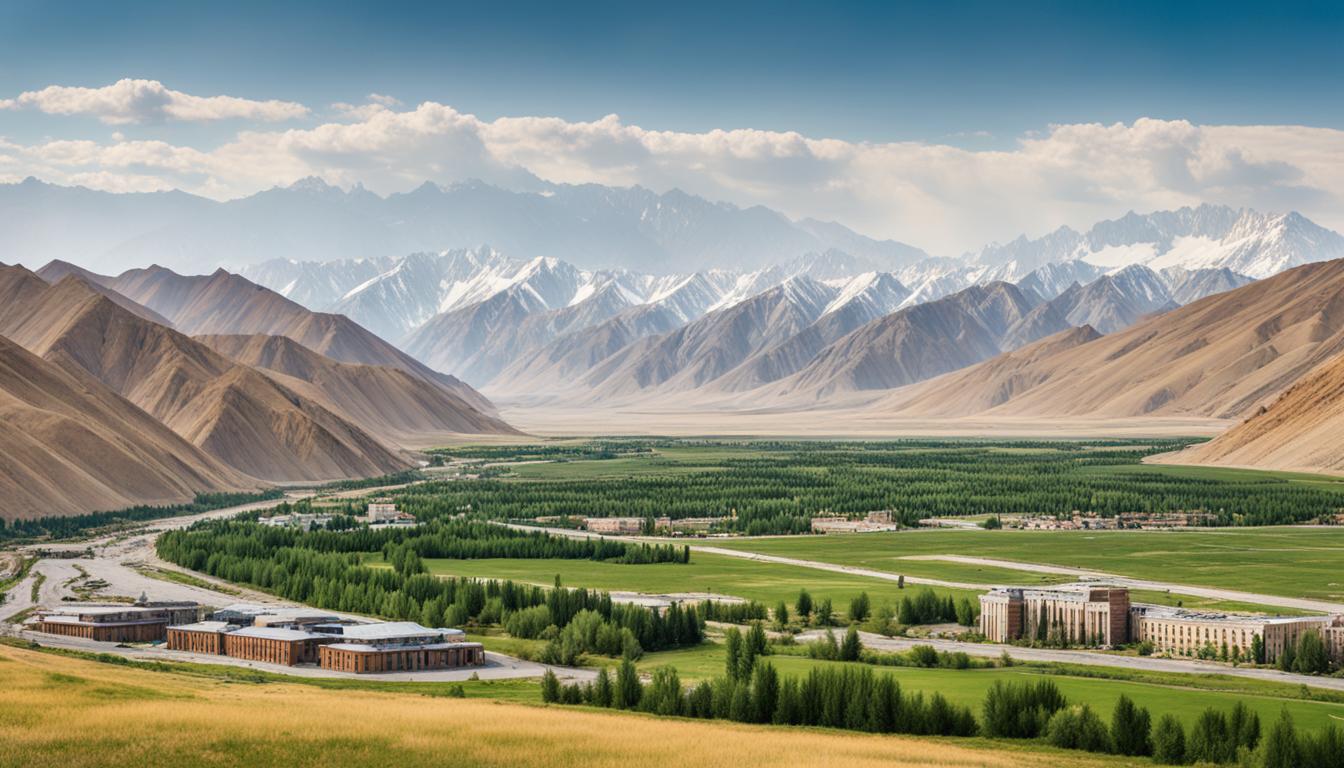Micronesia Biodiversity and the Built Environment
In Micronesia, an archipelago scattered across the vast Pacific Ocean, a remarkable biodiversity thrives. This stunning region, nestled within the Polynesia-Micronesia Biodiversity Hotspot, boasts an incredible variety of animal and plant species. However, an alarming fact looms on the horizon, highlighting the fragility of this delicate balance.
Surprisingly, three-quarters of the globally threatened species in Micronesia are directly affected by invasive species, habitat alteration and loss, over-exploitation of natural resources, natural phenomena, and climate change. The impact of these threats on the region’s unique flora and fauna is immense, necessitating urgent action to preserve and protect Micronesia’s ecological treasures.
Key Takeaways:
- Micronesia is home to a diverse range of animal and plant species.
- The region’s biodiversity is at risk due to invasive species, habitat alteration, over-exploitation of natural resources, natural phenomena, and climate change.
- Prioritizing environmental conservation and sustainable development in Micronesia is crucial.
- Micronesia’s National Biodiversity Strategy and Action Plan (NBSAP) guides conservation efforts.
- The built environment can play a significant role in enhancing and preserving biodiversity in Micronesia.
Invasive Species and their Impact on Micronesia Biodiversity
Invasive species pose a significant threat to the biodiversity of Micronesia. Approximately three-quarters of the globally threatened species in the region are directly threatened by invasive species. These non-native organisms, introduced either intentionally or unintentionally, have the ability to outcompete native species and disrupt delicate ecosystems. The consequences of invasive species can be devastating.
“Invasive species can cause a decline in the overall species richness of an area. They can outcompete native species for resources such as food, water, and shelter, leading to a decline in native populations. This disruption of the natural balance can have cascading effects on the entire ecosystem.”
For example, the brown treesnake (Boiga irregularis) was accidentally introduced to Guam in the 1940s and has since had a disastrous impact on the island’s biodiversity. This snake has decimated native bird populations, leading to the extinction of several species. The unchecked proliferation of invasive plants and animals can have similar destructive effects on Micronesia’s unique flora and fauna.
Controlling existing invasive species and preventing the introduction of new ones is crucial for protecting Micronesia’s biodiversity. This requires a combination of early detection, rapid response, and ongoing management efforts. By identifying and removing invasive species, and implementing measures to prevent their spread, we can minimize the negative impact on native ecosystems. The conservation of Micronesia’s biodiversity relies on our collective action against invasive species.
The Impact of Invasive Species
The presence of invasive species can have wide-ranging consequences for Micronesia’s biodiversity. Some of the key impacts include:
- Displacement and elimination of native species
- Alteration of habitats and ecosystems
- Increased competition for limited resources
- Disruption of natural ecological processes
- Loss of genetic diversity
The spread of invasive species threatens the delicate balance of Micronesia’s ecosystems, leading to a decrease in biodiversity and ecological resilience. Urgent action is needed to prevent further damage and protect the rich natural heritage of the region.
Preventing the Introduction and Spread of Invasive Species
Efforts to prevent the introduction and spread of invasive species play a crucial role in biodiversity conservation. Here are some key strategies:
- Implementing strict biosecurity measures at ports of entry to prevent the accidental importation of invasive species.
- Educating the public, including tourists and local communities, about the potential risks associated with the release of non-native species.
- Monitoring and surveillance programs to detect and respond to new invasions at an early stage, before they become established and spread.
- Establishing partnerships and collaborations between different stakeholders, including government agencies, research institutions, and local communities, to develop effective strategies for invasive species management.
By taking proactive measures to address the threat of invasive species, we can safeguard the unique biodiversity of Micronesia and ensure the long-term health and resilience of its ecosystems.
| Invasive Species | Threats to Biodiversity |
|---|---|
| Brown Treesnake (Boiga irregularis) | Decimation of native bird populations, extinction of several species |
| Coconut Rhinoceros Beetle (Oryctes rhinoceros) | Destruction of coconut palms and other palm species |
| Ti Plant Mite (Aceria guerreronis) | Damage to ti plants, a traditional staple crop in Micronesia |
Biodiversity conservation in Micronesia requires a concerted effort to address the threat of invasive species. By raising awareness, implementing effective management strategies, and fostering collaboration, we can protect the unique flora and fauna of the region.
Habitat Alteration and Loss in Micronesia Biodiversity
Three-quarters of threatened species in the Micronesia hotspot are affected by habitat alteration and loss. The conversion of native ecosystems for economic activities such as agriculture and logging destroys vital habitats and disrupts natural processes.
Agricultural activities and logging contribute to the fragmentation of natural ecosystems, which poses a serious threat to island species. Additionally, habitat alteration and loss provide opportunities for invasive predators to thrive and further threaten native species.
Impact on Micronesia Biodiversity
This habitat alteration and loss have dire consequences for Micronesia’s biodiversity. The destruction of vital habitats disrupts ecological balance and leads to the decline of unique plant and animal species.
Without intact habitats, native species struggle to find suitable places to breed, feed, and seek shelter. This, in turn, affects the overall health and resilience of ecosystems, making them more vulnerable to further disturbance.
Conservation efforts are crucial to protect Micronesia’s biodiversity and ensure the preservation of its unique ecosystems.
Conservation Efforts in Micronesia
Micronesia recognizes the importance of conservation and has implemented various initiatives to mitigate the impact of habitat alteration and loss. These conservation efforts focus on:
- Preserving and restoring native habitats
- Establishing protected areas
- Implementing sustainable land-use practices
- Supporting community-based conservation initiatives
- Managing invasive species
By prioritizing these conservation efforts, Micronesia aims to safeguard its biodiversity and maintain the delicate balance of its ecosystems.
Conservation Organizations in Action
A number of organizations are actively involved in biodiversity conservation in Micronesia. Some notable examples include:
- Micronesia Conservation Trust
- Micronesia Program of the Conservation Society of Pohnpei
- The Nature Conservancy
- Micronesia Challenge
Through collaboration and partnerships with local communities, government agencies, and international organizations, these conservation entities work towards the protection and restoration of Micronesia’s unique biodiversity.
Protecting Micronesia’s Future
Preserving Micronesia’s biodiversity requires concerted efforts to minimize habitat alteration and loss. Governments, communities, and individuals can contribute to conservation through:
- Supporting sustainable land-use practices
- Advocating for the establishment of protected areas
- Engaging in community-based conservation initiatives
- Adopting responsible tourism practices
- Educating and raising awareness about the importance of biodiversity and its conservation

Over-Exploitation of Natural Resources and Destructive Harvest Techniques
The delicate balance of Micronesia’s biodiversity is threatened by the over-exploitation of its natural resources and the use of destructive harvest techniques. Unsustainable hunting practices and the overharvesting of plant species have detrimental effects on the region’s native biodiversity. These activities disrupt the fragile ecosystems, endangering the survival of various species.
It is crucial to prioritize the protection of Micronesia’s biodiversity through sustainable resource management and the promotion of alternative and sustainable practices. By adopting responsible harvesting methods, we can ensure the long-term sustainability of natural resources while safeguarding the intricate web of life that thrives in Micronesia.
| Impact of Over-Exploitation and Destructive Harvest Techniques on Micronesia Biodiversity | Sustainable Practices to Protect Biodiversity |
|---|---|
| 1. Decline in biodiversity and species richness | 1. Implementing sustainable harvesting quotas |
| 2. Disruption of ecosystem balance | 2. Promoting the cultivation of native plant species |
| 3. Threat to species survival | 3. Encouraging the use of non-destructive harvest techniques |
By adopting sustainable practices, such as responsible harvesting quotas, the cultivation of native plant species, and the use of non-destructive harvest techniques, we can mitigate the negative impacts of over-exploitation and ensure the long-term preservation of Micronesia’s rich biodiversity.
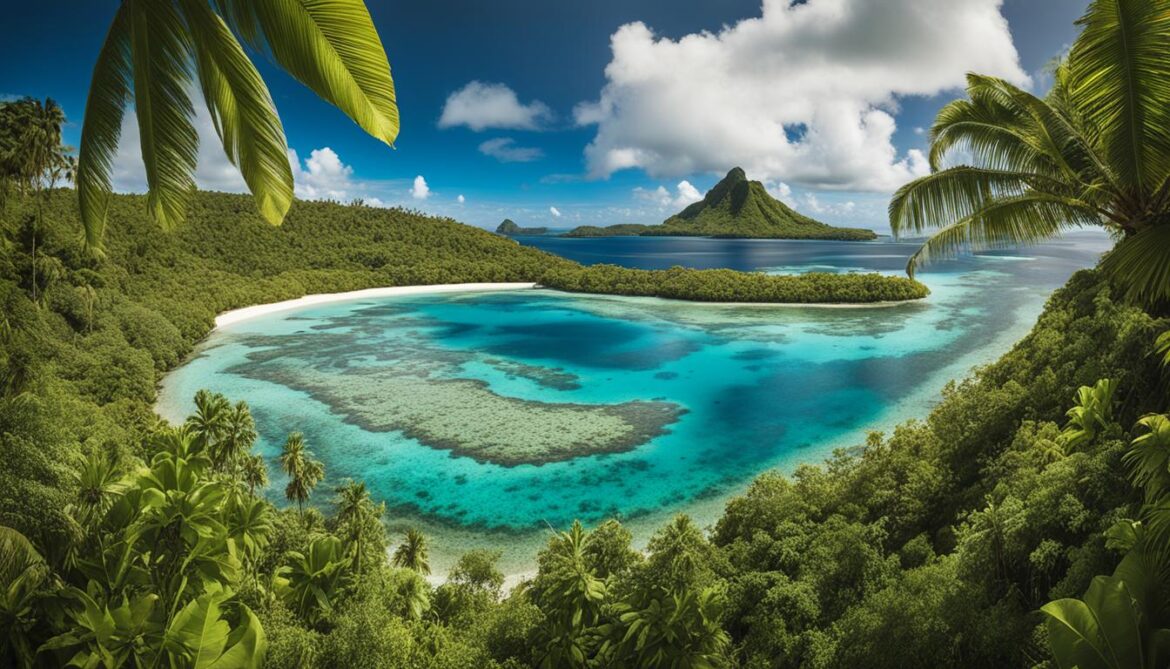
Natural Phenomena and their Impacts on Micronesia Biodiversity
Natural weather phenomena can have significant impacts on biodiversity in Micronesia. Events such as cyclones, floods, drought, and fire disrupt habitats, causing damage to ecosystems and threatening the delicate balance of biodiversity. These natural phenomena not only directly affect flora and fauna populations but also create opportunities for invasive species to establish themselves, further endangering native species.
With the increasing global climate change and rising sea-levels, the frequency and intensity of these extreme weather events are expected to escalate. This poses a grave threat to Micronesia’s delicate ecosystems, particularly the low-lying atolls that are already vulnerable to sea-level rise.
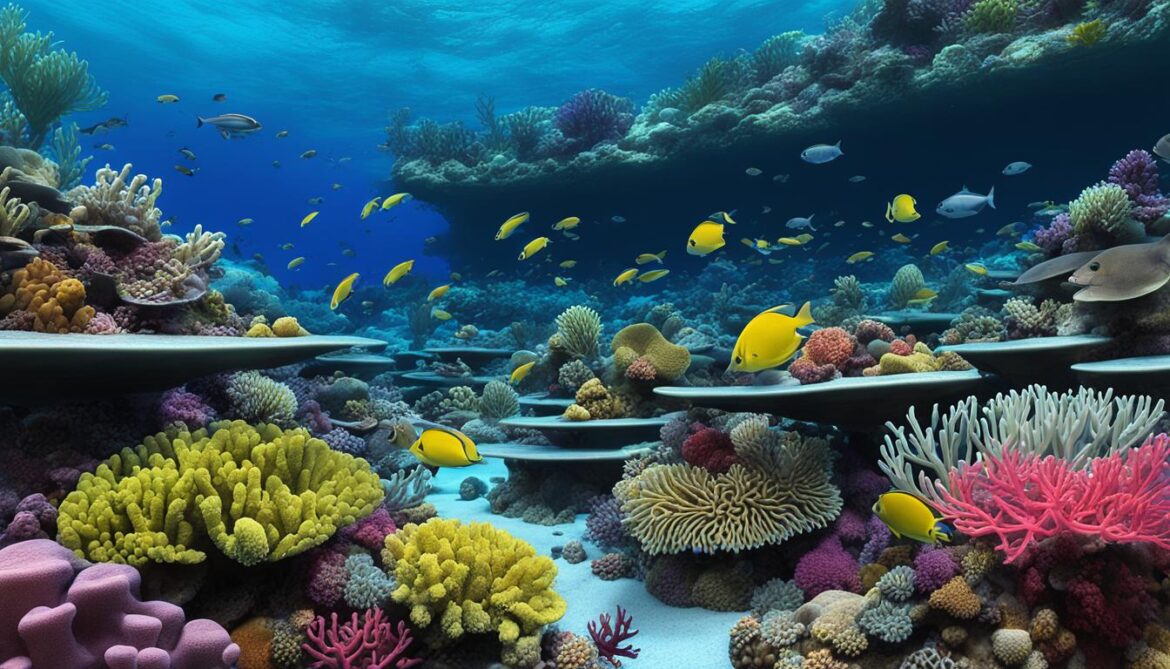
To illustrate the potential impact of climate change and sea-level rise on Micronesia’s biodiversity, the following table highlights some of the key natural phenomena and their consequences:
| Natural Phenomenon | Impact on Biodiversity |
|---|---|
| Cyclones | Disruption and destruction of habitats, direct loss of biodiversity, increased vulnerability to invasive species. |
| Floods | Drowning of terrestrial and aquatic habitats, displacement of species, contamination of freshwater ecosystems. |
| Drought | Water scarcity, loss of vegetation cover, reduced food and water availability for wildlife, increased risk of wildfires. |
| Fire | Loss of vegetation, destruction of habitats, changes in ecosystem dynamics, increased vulnerability to invasive species. |
As the frequency and intensity of these natural phenomena continue to rise, it is essential to prioritize biodiversity conservation and resilience-building efforts in Micronesia. This involves implementing sustainable practices, enhancing ecosystem protection measures, and promoting climate change adaptation strategies. Only through concerted efforts can we safeguard the unique biodiversity that Micronesia possesses and ensure its long-term survival.
Micronesia’s Conservation Efforts and the NBSAP
In order to safeguard its diverse array of flora and fauna, Micronesia has undertaken dedicated conservation efforts through the National Biodiversity Strategy and Action Plan (NBSAP). This comprehensive plan sets out specific targets and actions aimed at preserving biodiversity in the region.
The NBSAP emphasizes the importance of species management, sustainable use of genetic resources, agro-biodiversity, ecological sustainable industry, and waste management. By addressing these key areas, Micronesia aims to protect its unique biodiversity and ensure the long-term sustainability of its ecosystems.
Micronesia is actively striving to achieve the 2020 Aichi Biodiversity Targets, a set of global goals established to halt the loss of biodiversity. Through the NBSAP, the country is implementing measures to conserve and restore ecosystems, promote sustainable agriculture, and enhance the resilience of biodiversity to climate change.
To further support its conservation efforts, Micronesia seeks partnerships and collaborations with international organizations and governments. These collaborations play a vital role in securing funding and sharing knowledge and expertise to effectively implement the NBSAP and achieve its conservation goals.

Conservation Targets and Actions under the NBSAP
The NBSAP outlines an array of targets and actions that Micronesia is undertaking to preserve biodiversity. Here are some key conservation targets and actions:
| Conservation Target | Conservation Action |
|---|---|
| Species Management | Implementation of conservation programs for endangered and threatened species. |
| Sustainable Use of Genetic Resources | Development of guidelines and policies for the sustainable use of genetic resources. |
| Agro-biodiversity | Promotion of sustainable agricultural practices to protect crop diversity. |
| Ecological Sustainable Industry | Encouragement of environmentally friendly industrial practices to minimize impacts on biodiversity. |
| Waste Management | Implementation of waste management strategies to reduce pollution and its detrimental effects on biodiversity. |
By pursuing these conservation targets and actions, Micronesia is fostering a sustainable future that values and protects its rich biodiversity.
The Importance of Biodiversity Net Gain in the Built Environment
Biodiversity net gain is a crucial concept in the construction industry to ensure the preservation and enhancement of biodiversity while undertaking development projects. Its objective is to achieve a positive outcome by creating additional habitats for animals and plants within the built environment. By incorporating biodiversity-friendly practices, the construction industry can contribute significantly to conservation efforts and habitat preservation.
New regulations are being proposed to enforce developers to achieve a minimum of 10% net gain in biodiversity and secure these habitats for at least 30 years. These regulations aim to mitigate the significant impact of construction activities on natural ecosystems and promote sustainable development practices that prioritize biodiversity conservation.
By implementing biodiversity net gain measures, developers can contribute to the overall conservation of species and ecosystems. This proactive approach ensures that the built environment becomes a haven for wildlife and helps restore ecological balance in urban areas.
“The success of biodiversity net gain lies in its ability to balance development needs with the preservation of biodiversity. It allows us to create sustainable habitats for wildlife within human-dominated landscapes, ensuring that future generations can enjoy thriving ecosystems.” – Jane Stevens, Environmental Scientist
Benefits of Biodiversity Net Gain in the Built Environment
- Conservation: Biodiversity net gain helps conserve vulnerable species and supports the natural ecological processes that promote ecosystem resilience.
- Enhanced Urban Environment: By incorporating green spaces, such as parks, rooftop gardens, and urban forests, the built environment becomes more aesthetically pleasing, healthier, and livable.
- Improved Air and Water Quality: Green infrastructure in the built environment, such as trees and vegetation, helps filter pollutants, reducing air and water pollution.
- Climate Change Adaptation: Biodiverse habitats in urban areas can aid in adapting to climate change, providing resilience against extreme weather events and contributing to carbon sequestration.
- Educational Opportunities: Green spaces within the built environment can serve as educational resources, promoting awareness and understanding of biodiversity and environmental conservation.
By prioritizing biodiversity net gain in the built environment, we can create sustainable and ecologically conscious cities that support thriving ecosystems while meeting our developmental needs.
| Benefits of Biodiversity Net Gain | Description |
|---|---|
| Conservation | Promotes the preservation of vulnerable species and ecological processes. |
| Enhanced Urban Environment | Improved aesthetics, health, and livability through the integration of green spaces. |
| Improved Air and Water Quality | Green infrastructure aids in filtering pollutants, reducing air and water pollution. |
| Climate Change Adaptation | Biodiverse habitats contribute to climate resilience and carbon sequestration. |
| Educational Opportunities | Green spaces serve as educational resources, fostering awareness and understanding of biodiversity. |
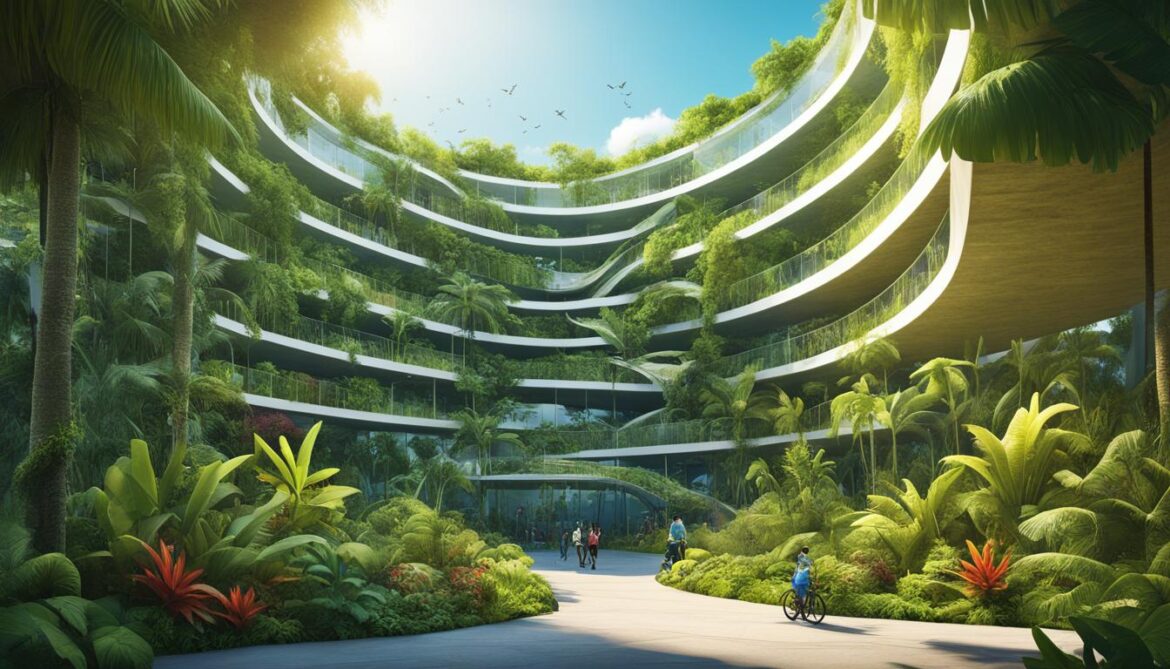
Biodiversity in Practice in the Built Environment
The built environment has a significant role to play in enhancing biodiversity in urban areas. Through thoughtful habitat modification and the creation of green spaces, we can promote the thriving coexistence of wildlife and humans.
One effective way to enhance biodiversity is by incorporating green spaces such as public parks, green walls, and green roofs into urban design. These areas provide much-needed refuge for displaced wildlife and contribute to the overall health of urban ecosystems. They also offer valuable recreational spaces for communities to connect with nature.
Practical approaches like implementing indoor and outdoor planting regimes can further enhance biodiversity in the built environment. By introducing a variety of native plants, we can attract pollinators, birds, and other wildlife species. Additionally, installing beehives can support the well-being of bees and promote the pollination of plants.
“The integration of green spaces and biodiversity-friendly practices in urban environments creates a harmonious balance between human development and ecological preservation.” – Green Architecture Magazine
Promoting Biodiversity in the Built Environment: Key Strategies
- Designing buildings with green roofs and vertical gardens
- Creating natural corridors for wildlife movement
- Implementing sustainable stormwater management systems
- Using native plant species in landscape design
- Developing wildlife-friendly habitats within urban areas
By implementing these strategies, the built environment can nurture thriving urban ecosystems and contribute to the overall well-being of both humans and wildlife.

| Benefits of Biodiversity-enhancing Practices | Example |
|---|---|
| Improved air quality and reduced heat island effect | Green roofs reducing energy consumption |
| Enhanced urban aesthetics and improved mental health | Public parks providing green spaces for relaxation |
| Increased wildlife populations and enhanced ecological balance | Vertical gardens attracting birds and insects |
| Enhanced community engagement and educational opportunities | Community gardens fostering environmental awareness |
The Role of Businesses in Biodiversity Conservation
Businesses have a crucial role to play in biodiversity conservation. As key stakeholders in the global ecosystem, they are responsible for assessing and mitigating the impact of their operations on biodiversity. By adopting environmentally responsible practices, businesses can contribute to the preservation and protection of our planet’s diverse species and ecosystems.
One important aspect of businesses’ environmental responsibility is the collection and analysis of biodiversity data. By systematically collecting data on the biodiversity in and around their operations, businesses can gain valuable insights into the state of local ecosystems and species. This data can then be used to inform conservation efforts and monitor the effectiveness of mitigation measures.
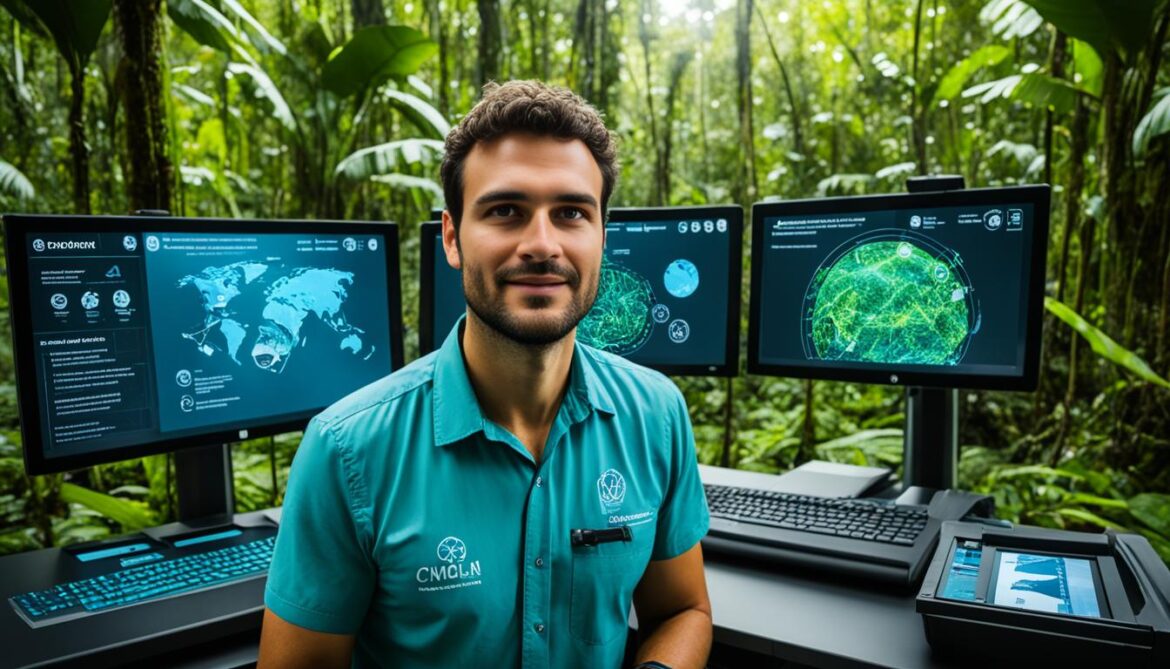
Reporting this data to local authorities and other relevant bodies is also crucial. Transparent reporting ensures accountability and allows for the monitoring and evaluation of biodiversity conservation efforts on a larger scale. It enables governments, NGOs, and other stakeholders to assess the impact of business activities on biodiversity and collaborate on targeted conservation initiatives.
Raising awareness among staff and suppliers is another essential step in businesses’ commitment to biodiversity conservation. By educating employees and partners about the importance of biodiversity and the impact of their actions, businesses can foster a culture of environmental responsibility. This awareness can lead to the adoption of sustainable practices, the integration of biodiversity considerations into decision-making processes, and the promotion of conservation initiatives within and beyond the business sphere.
In conclusion, businesses play a vital role in biodiversity conservation through their assessment and reporting of impacts, data collection, and environmental responsibility. By prioritizing the protection of biodiversity, businesses can contribute to sustainable development and be key partners in global conservation efforts.
The Future of Biodiversity in the Built Environment
The future of biodiversity in the built environment depends on the implementation of new regulations and the commitment of the construction industry to prioritize conservation and sustainability. As COP15 approaches, the built environment has an opportunity to become leaders in biodiversity protection and creation. By integrating biodiversity-friendly practices and raising awareness, the industry can contribute to a sustainable future.
“The built environment plays a critical role in shaping the future of biodiversity. As urbanization continues to expand, it is crucial that we design and construct sustainable and environmentally-friendly buildings and infrastructure.” – Jane Smith, Environmental Conservationist
The built environment, including residential and commercial spaces, has the potential to promote biodiversity through thoughtful design and construction practices. Incorporating green spaces, such as rooftop gardens and urban parks, not only enhances the aesthetic value of the built environment but also provides habitats for plants and animals. By incorporating sustainable practices, such as water conservation and energy-efficient design, the built environment can minimize its ecological footprint and contribute to the preservation of biodiversity.
The Role of Environmental Regulations
Environmental regulations play a vital role in safeguarding biodiversity in the built environment. Governments and regulatory bodies are increasingly recognizing the need for stricter environmental regulations to protect natural habitats and prevent further loss of biodiversity. These regulations aim to ensure that construction projects consider the impact on biodiversity during planning, design, and operation phases.
- Environmental Impact Assessments: These assessments evaluate the potential impact of a construction project on biodiversity, ensuring that necessary measures are taken to mitigate negative effects.
- Biodiversity Offsetting: Biodiversity offsetting involves compensating for the loss of biodiversity caused by development through the creation or restoration of habitats elsewhere.
- Protected Area Designation: Governments designate protected areas, such as national parks and nature reserves, to preserve biodiversity and restrict development in these sensitive areas.
By adhering to these regulatory frameworks, the construction industry can contribute to the conservation and restoration of biodiversity in the built environment.
The Importance of Sustainable Practices
Sustainability is a key factor in ensuring the future of biodiversity in the built environment. Adopting sustainable practices not only minimizes negative impacts on biodiversity but also promotes the creation of habitats and the enhancement of ecological connectivity.
Some examples of sustainable practices that enhance biodiversity in the built environment include:
| Sustainable Practice | Benefits |
|---|---|
| Green Roof Installations | Provide habitats for various plant species and attract pollinators |
| Wildflower Plantings | Support local biodiversity, including bees and butterflies |
| Stormwater Management Systems | Help preserve water resources and create habitats for aquatic species |
| Community Gardens | Promote urban agriculture and enhance local biodiversity |
Implementing these sustainable practices not only benefits the environment but also adds value to the built environment, creating healthier and more attractive spaces for communities.
Biodiversity conservation in the built environment is a shared responsibility. It requires collaboration between governments, businesses, and communities to prioritize sustainable development and maintain the delicate ecological balance. By embracing environmentally-friendly practices and incorporating biodiversity considerations into every stage of the construction process, we can create a future where the built environment coexists harmoniously with nature.
Conclusion
Micronesia’s biodiversity is currently facing significant threats from invasive species, habitat alteration and loss, over-exploitation of natural resources, natural phenomena, and climate change. To address these challenges, the implementation of the National Biodiversity Strategy and Action Plan (NBSAP) and the upcoming regulations for biodiversity net gain in the built environment are essential.
By prioritizing conservation efforts and sustainable development, Micronesia can protect and enhance its unique biodiversity. The NBSAP, with its specific targets and actions for biodiversity conservation, provides a comprehensive roadmap for preserving and managing the region’s valuable flora and fauna.
In addition, the integration of biodiversity-friendly practices in the built environment plays a crucial role in safeguarding Micronesia’s natural heritage. Through the creation of green spaces, habitat modification, and sustainable urban planning, the built environment can contribute to the preservation and restoration of biodiversity.
By striving for a harmonious coexistence between human activities and the natural world, Micronesia and the global built environment can work together to create a sustainable future that not only protects biodiversity but also promotes the well-being of present and future generations.




